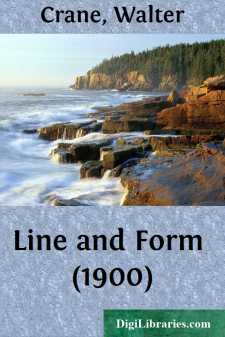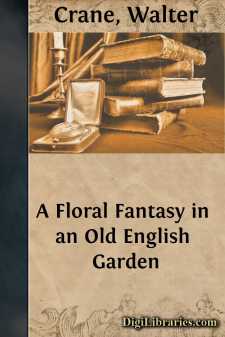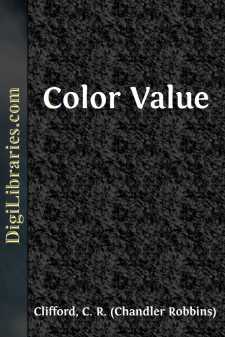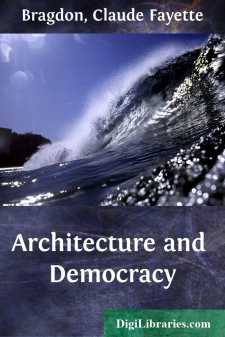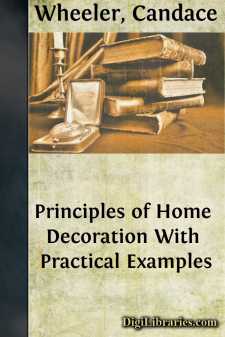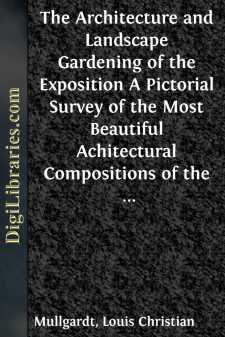Categories
- Antiques & Collectibles 13
- Architecture 36
- Art 48
- Bibles 22
- Biography & Autobiography 813
- Body, Mind & Spirit 142
- Business & Economics 28
- Children's Books 17
- Children's Fiction 14
- Computers 4
- Cooking 94
- Crafts & Hobbies 4
- Drama 346
- Education 46
- Family & Relationships 57
- Fiction 11829
- Games 19
- Gardening 17
- Health & Fitness 34
- History 1377
- House & Home 1
- Humor 147
- Juvenile Fiction 1873
- Juvenile Nonfiction 202
- Language Arts & Disciplines 88
- Law 16
- Literary Collections 686
- Literary Criticism 179
- Mathematics 13
- Medical 41
- Music 40
- Nature 179
- Non-Classifiable 1768
- Performing Arts 7
- Periodicals 1453
- Philosophy 64
- Photography 2
- Poetry 896
- Political Science 203
- Psychology 42
- Reference 154
- Religion 513
- Science 126
- Self-Help 84
- Social Science 81
- Sports & Recreation 34
- Study Aids 3
- Technology & Engineering 59
- Transportation 23
- Travel 463
- True Crime 29
Line and Form (1900)
by: Walter Crane
Categories:
Description:
Excerpt
PREFACE
As in the case of "The Bases of Design," to which this is intended to form a companion volume, the substance of the following chapters on Line and Form originally formed a series of lectures delivered to the students of the Manchester Municipal School of Art.
There is no pretension to an exhaustive treatment of a subject it would be difficult enough to exhaust, and it is dealt with in a way intended to bear rather upon the practical work of an art school, and to be suggestive and helpful to those face to face with the current problems of drawing and design.
These have been approached from a personal point of view, as the results of conclusions arrived at in the course of a busy working life which has left but few intervals for the elaboration of theories apart from practice, and such as they are, these papers are now offered to the wider circle of students and workers in the arts of design as from one of themselves.
They were illustrated largely by means of rough sketching in line before my student audience, as well as by photographs and drawings. The rough diagrams have been re-drawn, and the other illustrations reproduced, so that both line and tone blocks are used, uniformity being sacrificed to fidelity.
WALTER CRANE.
Kensington, July, 1900.
- CHAPTER I
- Origin and Function of Outline—Silhouette—Definition of Boundaries by—Power of Characterization by—Formation of Letters—Methods of Drawing in Line—The Progressive Method—The Calligraphic Method—The Tentative Method—The Japanese Direct Brush Method—The Oval Method—The Rectangular Method—Quality of Line—Linear Expression of Movement—Textures—Emotion—Scale of Linear Expression
- CHAPTER II
- The Language of Line—Dialects—Comparison of the Style of Various Artists in Line—Scale of Degrees in Line—Picture Writing—Relation of Line to Form—Two Paths—The Graphic Purpose—Aspect—The Ornamental Purpose—Typical Treatment or Convention—Rhythm—Linear Plans in Pattern Designing—Wall-paper Design—Controlling Forms—Memory—Evolution in Design—Variety in Unity—Counterbalance—Linear Logic—Recurring Line and Form—Principle of Radiation—Range and Use of Line
- CHAPTER III
- Of the Choice and Use of Line—Degree and Emphasis—Influence of the Photograph—The Value of Emphasis—The Technical Influence—The Artistic Purpose—Influence of Material and Tools—Brushwork—Charcoal— Pencil—Pen
- CHAPTER IV
- Of the Choice of Form—Elementary Forms—Space-filling—Grouping— Analogies of Form—Typical Forms of Ornament—Ornamental Units— Equivalents in Form—Quantities in Design—Contrast—Value of Variations of Similar or Allied Forms—Use of the Human Figure and Animal Forms in Ornamental Design
- CHAPTER V
- Of the Influence of Controlling Lines, Boundaries Spaces, and Plans in Designing—Origin of Geometric Decorative Spaces and Panels in Architecture—Value of Recurring Line—Tradition—Extension— Adaptability—Geometric Structural Plans—Frieze and Field—Ceiling Decoration—Co-operative Relation
- CHAPTER VI
- Of the Fundamental Essentials of Design: Line, Form, Space—Principles of Structural and Ornamental Line in Organic Forms—Form and Mass in Foliage—Roofs—The Mediæval City—Organic and Accidental Beauty— Composition: Formal and Informal—Power of Linear Expression—Relation of Masses and Lines—Principles of Harmonious Composition
- CHAPTER VII
- Of the Relief of Form—Three Methods—Contrast—Light and Shade, and Modelling—The Use of Contrast and Planes in Pattern Designing— Decorative Relief—Simple Linear Contrast—Relief by Linear Shading— Different Emphasis in relieving Form by Shading Lines—Relief by means of Light and Shade alone without Outline—Photographic Projection—Relief by different Planes and Contrasts of Concave and Convex Surfaces in Architectural Mouldings—Modelled Relief— Decorative Use of Light and Shade, and different Planes in Modelling and Carving—Egyptian System of Relief Sculpture—Greek and Gothic Architectural Sculpture, influenced by Structural and Ornamental Feeling—Sculptural Tombs, Medals, Coins, Gems—Florentine Fifteenth-century Reliefs—Desiderio di Settignano
- CHAPTER VIII
- Of the Expression of Relief in Line-drawing—Graphic Aim and Ornamental Aim—Superficial Appearance and Constructive Reality— Accidents and Essentials—Representation and Suggestion of Natural Form in Design—The Outward Vision and the Inner Vision
- CHAPTER IX
- Of the Adaptation of Line and Form in Design, in various materials and methods—Mural Decoration—Fresco-work of the Italian Painters—Modern Mural Work—Mural Spacing and Pattern Plans— Scale—The Skirting—The Dado—Field of the Wall—The Frieze— Panelling—Tapestry—Textile Design—Persian Carpets—Effect of Texture on Colour—Prints—Wall-paper—Stained Glass
- CHAPTER X
- Of the Expression and Relief of Line and Form by Colour—Effect of same Colour upon different Grounds—Radiation of Colour—White Outline to clear Colours—Quality of Tints relieved upon other Tints—Complementaries—Harmony—The Colour Sense—Colour Proportions—Importance of Pure Tints—Tones and Planes—The Tone of Time—Pattern and Picture—A Pattern not necessarily a Picture, but a Picture in principle a Pattern—Chiaroscuro—Examples of Pattern-work and Picture-work—Picture-patterns and Pattern-pictures
- INDEX


